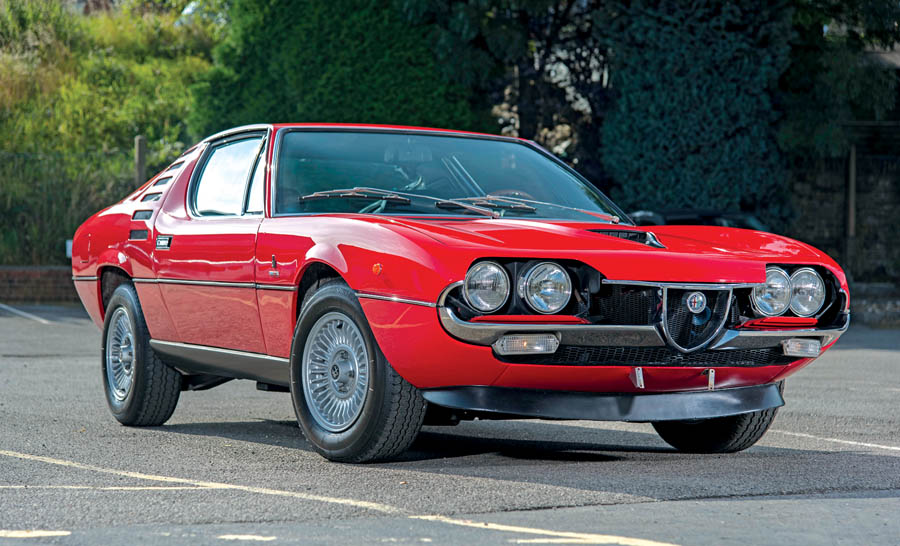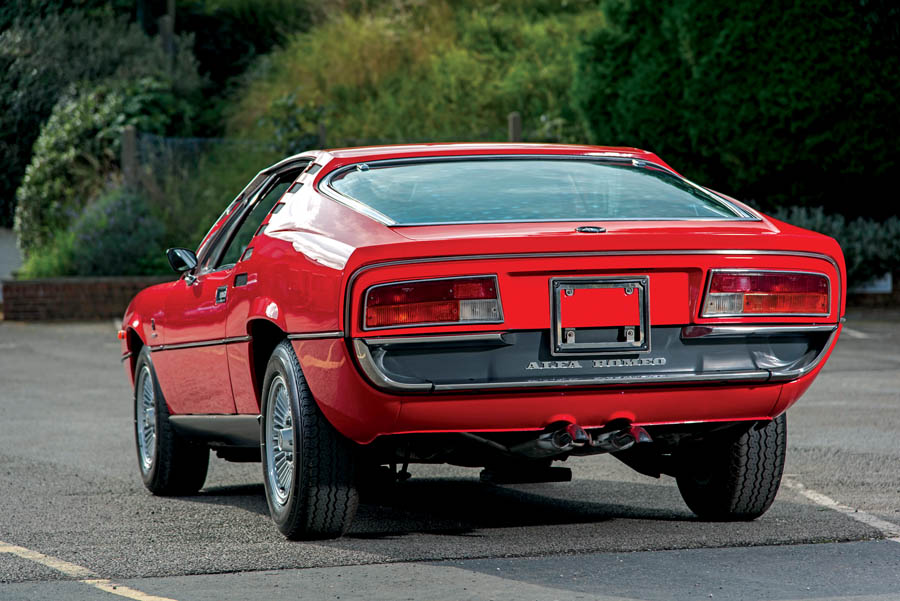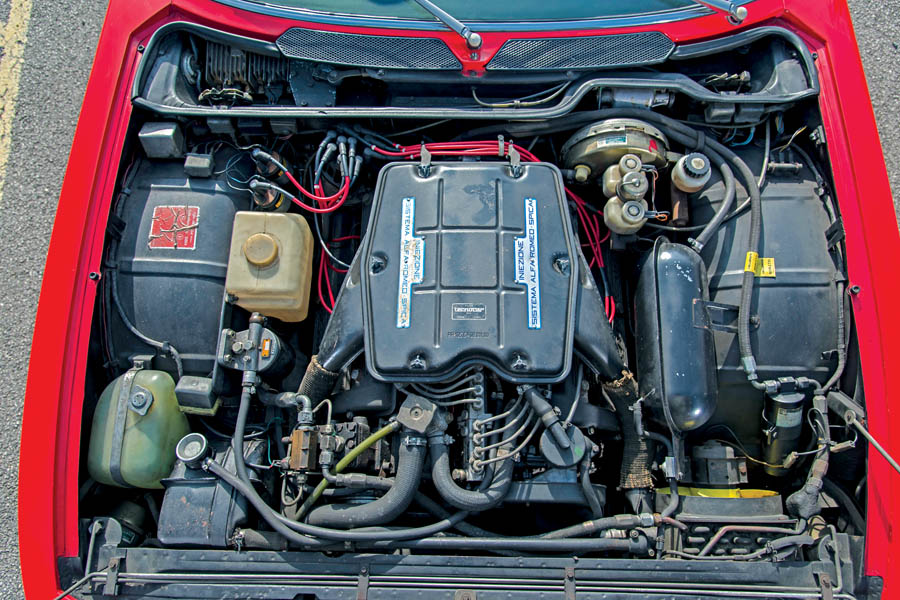SCM Analysis
Detailing
| Vehicle: | 1973 Alfa Romeo Montreal Coupe |
| Years Produced: | 1971–77 |
| Number Produced: | 3,925 |
| Original List Price: | $8,000 (approximate) |
| SCM Valuation: | $77,000 |
| Distributor Caps: | $150 |
| Chassis Number Location: | Engine compartment bulkhead |
| Engine Number Location: | Intake side of engine near front |
| Club Info: | Alfa Romeo Owners Club USA |
| Website: | http://www.aroc-usa.org |
| Alternatives: | 1975–81 Jaguar XJS 1972–74 BMW 3.0CS 1974–79 Dino 308 GT4 |
| Investment Grade: | C |
This car, Lot 52, sold for $87,510 (€74,750, €1=$1.17), including buyer’s premium, at Bonhams’ Zoute, Belgium, auction on October 6, 2017.
Few automobile companies have done better than Alfa Romeo in bringing “dreams” to the road. After the Sprint Speciale gave us a B.A.T. we could put in our garage and the insane Tipo 33 Stradale sated the lust of 18 of the luckiest people on the planet, the futuristic Expo ’67 Montreal show car came to the showroom. Not only did they actually build the Bertone beauty, but in place of the expected Giulia twin-cam inline four was a four-cam V8 — a scion of the Tipo 33’s racing engine.
Of course, it wasn’t exactly the engine that conquered the Nürburgring, Daytona and Targa Florio. While the Tipo 33 Stradale of 1967–68 retained the racing engine’s flat-plane crankshaft, which allowed for much higher horsepower output at high revs, the lower-range torque that the traditional cross-plane crank in the Montreal’s V8 delivered was obviously preferable for a car that was expected to see regular use on city streets as well as the high-speed Autostrada. Both the Tipo 33 Stradale and the Montreal also substituted chain-driven cams in place of the racers’ gear-driven ones.
A delightful driver
I had the great pleasure of living with a Montreal for a little more than a year, and I found it delightful. I loved the looks, the sound of the engine, the driving position and the effortless pace of the car around town and on the highway. I felt absolutely confident in any traffic situation. The only downside I found was the combination of the limitations of the Giulia-based platform and the width of the V8 engine. It results in the Montreal having a turning circle closer to that of an Italian luxury liner than a sports car. A Montreal owner should get used to multi-point U-turns, although on the road it didn’t seem that bothersome except on the sharpest of uphill hairpin turns.
The Montreal was never officially imported to the U.S., so all the cars found here will have the same specification as those in the rest of the world. It also means that California residents want one built before 1976. Interestingly, at a time when air conditioning was rare on Italian-market cars, a number of Montreals came so equipped. Almost none of the cars I’ve encountered in the U.S. seem to have it, but increasingly I run into them for sale in Italy. Our subject car was air-conditioned, although no statement was made concerning its function. More importantly, the impossible-to-replace rear hatch struts still worked — an important point when looking at one of these cars.
Presentable, but with questions
The generally gentle life this car may have had was also evidenced by the almost unscratched alloy door-sill plates and the original knit-cloth seat fabric — another irreplaceable item. Although rather baggy on the driver’s seat, it showed no tears or rips. Many cars have been retrimmed by now with leather or in a shinier nylon knit fabric similar to the original. The body appeared to be in decent condition, and the chrome trim seemed to be quite presentable.
As for the mechanical condition, we can determine less. The entire point of a Montreal is its engine. It provides the ultimate satisfaction to be derived from this car and can be the source of the greatest pain. The grime of practically each of the 22,000 km covered is visible in this car’s engine compartment, which looks a bit more original than might be desirable for a new owner. While it seems a good idea to find an original car with low mileage, it’s far more important for a car such as this to have been regularly exercised and properly maintained. The seller had apparently used it very little. and I would presume the new owner should budget for a major service and replacement of every rubber part and a tear-down service of the SPICA injection.
A generous price
For years after production ended, the Montreal lived in a shadow world. Values were generally low — a reflection of both its rarity and expense in running. Five years ago, a very good one might be bought for $50,000. The best never came to the market, as their owners preferred to hold on rather than sell for less than they might have put into them. Others were simply unwilling to let the cars go because their dynamic qualities could not be replaced by anything in the price range.
After an extraordinary outlier auction sale of a very nice, but not perfect, example for $176,000 at Gooding & Company’s January 2014 Scottsdale event (SCM# 232413), there has been a slow drift downwards in auction sale prices from that peak. The absolute best Montreals now sell privately in the $130,000 range, with most in the market between $80k–$90k. In 2013, it can be agreed the seller purchased the car well below current levels, and that was reflected in the realistic estimate of $70k–$82k.
Nearly $90k for a nicely original but somewhat worn and insufficiently used Montreal is generous. If the engine is good, there’s no harm done here, but that’s a pretty large assumption. I hope the new owner sorts it then drives it as the builders intended. ♦
(Introductory description courtesy of Bonhams.)


